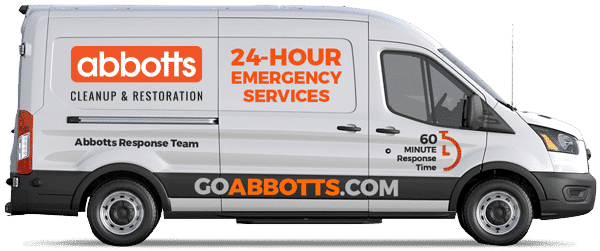Start Off the New Year with These Flood Safety Tips
January is the time when many of us think about creating new years resolutions. While these are often health related (diet and exercise), the new year is a good time to think about resolutions for your home, too. In this blog, we will provide you with the facts about home flooding, as well as how to minimize your risk for flooding and how to stay safe in the event that flooding occurs. Check out this blog for New Year Fire Safety Tips.
Flood Safety in the New Year
Flooding is the temporary overflow of water onto land or into a home environment that is normally dry. A flood may involve just a few inches of water or it can completely cover a house to its rooftop. There are many different causes of flooding, including heavy rain/snow melt, backed-up storm drains, burst pipes inside of the home, faulty irrigation systems, broken dams/levees, etc. Regardless of the cause, home flooding can be extremely expensive, stressful, and potentially dangerous. Knowing how to reduce your risk and handle the situation is of the utmost importance.
Flood Prevention
In many cases, flooding cannot be prevented. After all, you can’t stop the rain from falling or control the strength and integrity of local dams. There are, however, various types of home flooding that ARE preventable, and there are always steps that can be taken in order to reduce the risk of damage and harm to your household.
- Leaky Pipes – Even the smallest leaks in your pipes and plumbing could eventually lead to major water damage and flooding – especially if a leak begins while you are away from home. We strongly recommend that you consider installing water detection devices which can quickly detect leaks and allow you to take immediate steps to shut off the source and make repairs before a flood happens.
- Frozen Pipes – Colorado is prone to extremely cold temperatures during the winter months (and throughout the year). When pipes are exposed to freezing conditions, the water inside can freeze and expand, causing pipes to burst and produce major flooding. Insulating the areas around your pipes, keeping the temperatures around them above freezing, and allowing them to drip on extremely cold days can help mitigate the risk of your pipes bursting. For other tips, check out our blog on avoiding frozen pipes, which you can get to by clicking right here.
- Irrigation Systems – Broken sprinkler systems or sprinkler systems that are left on unattended for prolonged periods of time can lead to flooding around your home’s exterior and can eventually make their way into your home’s basement. During the warmer months, make sure that you shut off your outside water before leaving on vacation. During winter months, make sure you have completely drained your irrigation system. And ALWAYS address any broken or faulty sprinklers as soon as they are detected.
Flood Safety
Whether flooding was due to an issue with your home’s pipes or water system, or whether it was related to natural causes, it’s important to keep you and your family safe at all times. Never walk through floodwaters where electrical cords or outlets have been exposed to the water without first shutting off your home’s power. You should also evacuate your home immediately if your home’s floodwaters are rising rapidly and beyond your control, or if a flood evacuation order has been given. After a flood, you will need to mitigate mold damage right away. Mold can begin to develop as soon as 24 hours after a flood and can wreak havoc on your health. Other repairs may need to be made in order to restore the structural integrity of your home.
If your home is impacted by a flood, the team at Abbotts Fire & Flood is here to help. We are experts in removing mold and restoring homes to healthy and safe conditions after a flood has occurred. Give us a call to learn more today.

